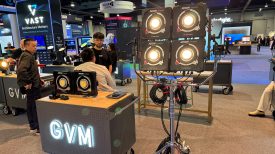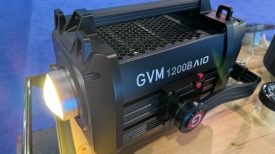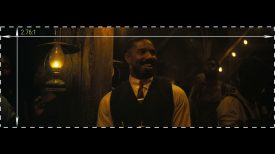Guest post by Frank Redward:
My freelance job is to shoot news on the Mid North Coast of New South Wales, Australia. Based in Coffs Harbour my work is nothing too fancy or flash. I work hard to find newsworthy video that the local and metro networks will run.
A lot of this news happens quickly, there are no second takes, it’s quick and dirty, I stepped up from stills shooting in early 2009 with the 5D mkII. I’m really quite new to shooting video and with the technology landscape changing so quickly I find it all very exciting.
I started shooting with the Canon C100 late last year, I wanted a dedicated video camera with reliable audio, snappy colour and sharpness, good low light capabilities and long battery life. It was a step up from the 5D mkIII and the Panasonic Lumix GH3. The C100 also offers other stuff not found on DSLRs such as focusing aids, peaking and magnify while shooting.
The C100 is a great camera. A lot of people have rubbished it, mainly due to the price and lack of a few features such a more powerful codec, faster frame rates for slow motion, the absence of a SDI output, the tiny viewfinder and ridiculously placed EVF, but you know what? this camera just works and works well. It’s reliable, the image is wonderful and the low light, now at 80,000 ISO is brilliant.
As nice as DSLR video was, for me having flimsy add on audio gear wasn’t reliable for run and gun, too easy for mistakes and I’ve made a lot. Before the C100 the 5D mkIII was my favourite all rounder and the GH3 was good for most shots in daylight, but both forced a lot of compromises.
Then last year, Canon announced Dual Pixel CMOS AF as an upgrade option. A few days ago Canon Australia in Sydney kindly upgraded my C100 same day for me. The cost was $550 AUD.
To explain my thoughts after testing it I would have to say the difference for me is profound. It feels like my working life using this camera is now split into two parts – life before Dual Pixel CMOS AF and life after. The auto focus system on the C100 is just that good. It’s transformed the usability of the camera and exceeded my expectations.
Moments after getting home from Canon I was running out the door to cover news. I went to three house fires in a row, and this is where the new Auto Focus upgrade proved to me it’s brilliance.The AF speed is so quick it puts the Panasonic GH2 and GH3 to shame.
I arrived at one of the house fires with the flames still billowing out a window. As news shooters know getting lots of flames adds greatly to the story, but you have to get the vision shot as quick as you can before the fire fighters put it out. Before Dual Pixel CMOS AF, getting and maintaining sharp focus always cost that extra time and energy, even with peaking turned on and using my trusty C100 Zacuto Z-Finder.
This time it was much easier, I was able to turn the camera on, quickly set exposure and point. The camera did the rest – focussing and locking onto the flames, the firefighters, the burnt and injured victim, the witness being interviewed. As they moved the AF tracked them, and all this in ridiculously low light, superfast and reliably. And shot with a Sigma ultra zoom attached – not even a Canon L lens!
![]()
The tests around the web so far looked impressive, but I wondered how this new AF feature would work in the wild, not just with fancy expensive Canon EF glass. The video above is shot without using one Canon lens, instead I used three Sigma lenses – an 18-250 OIS, 18-35 1.8 ART, and 50-500 OIS MKII.
I expected single-shot AF to work well. What I didn’t expect was that tracking focus is now quite possible and reliable. When subjects move past the camera you can maintain focus. Focus can also be held while zooming with lenses that are not Parfocal. This makes the whole experience of using stills zooms more similar to an ENG lens – all through the wonders of DUAL Pixel CMOS AF. DSLR lenses were never designed to work like this but it works because the Dual Pixel CMOS AF is just so fast.
I thoroughly recommend this amazing feature to all C100 owners, particularly to news shooters and solo operators.
Pros:
Super Fast Accurate Auto Focus that works on pretty much all Canon and non Canon AF capable lenses (never seen this speed before)
Locks on target without long travel of the focus ring
Focus Tracking now possible
Holding Focus while zooming now possible
Dynamic Focus while panning now possible
The time to setup and start shooting is substantially reduced
Cons:
Some AF Lens motors are slightly noisy so you will have to work around this with microphone placement
Battery life will be reduced (not sure how much but maybe 10% or more)
Focus may hunt a little when using AF during interviews on some subjects – better to hold the AF with your assigned custom button
There is no ability to move the focus area
You can’t change aperture during AF, doing so disables the feature requiring a camera restart.
Conclusion
Canon’s Dual Pixel CMOS AF is fantastic and works for me. It’s not 100% perfect but compared to what else is around it is amazing. It turns the C100 into a powerful real world shooting work horse. As an operator it adds a level of security and speed that’s very reassuring.
I never thought I would be saying any of this about using Auto Focus, but yes the feature really is that good for me. For what I do I’ll probably it for about 80% of my work.
You can contact Frank at redwardf@bigpond.net.au
Or visit his website at www.FrankRedwardPhotography.com






